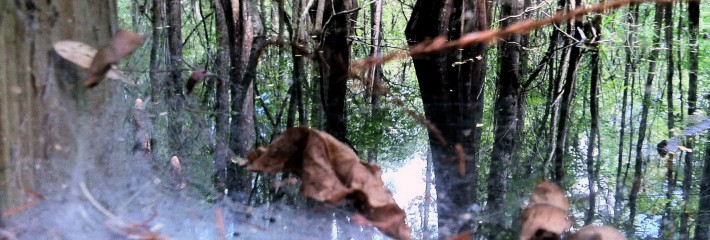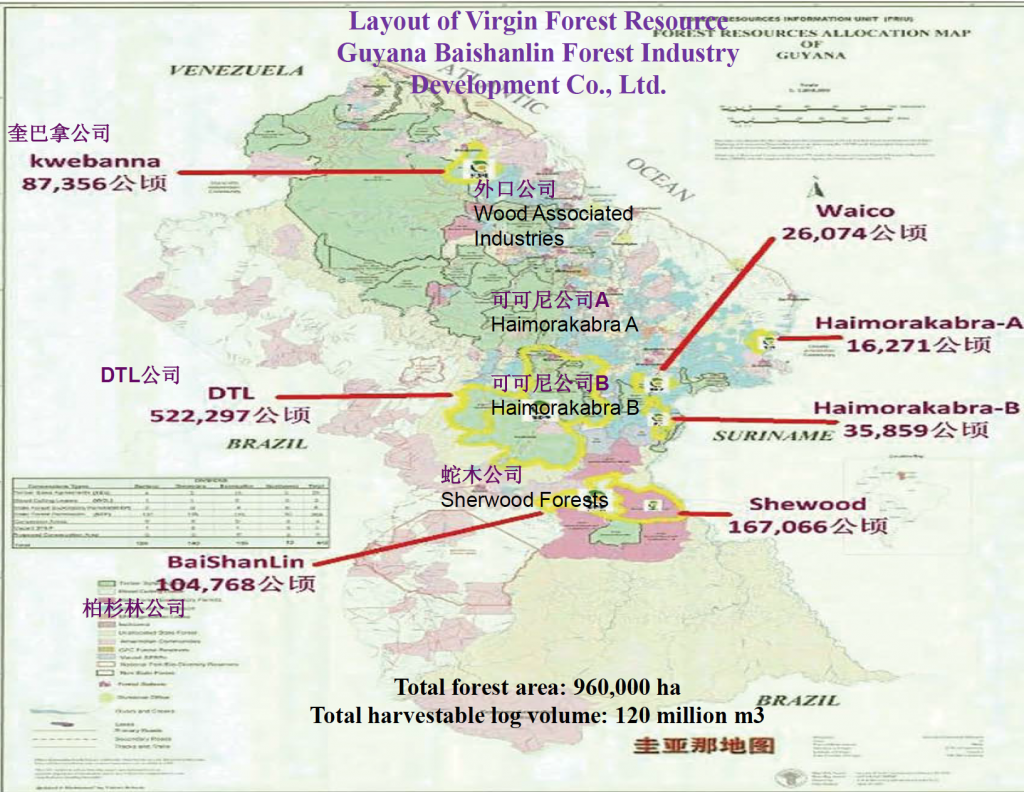Click here for a presentation on Guyana-China investment Baishanlin Presentation
Sustainability is – Day 1 Americas Forum
Human Imagination for a Sustainable Caribbean: Spaces for Creativity

I was invited to write a paper for the VIII Americas Competitiveness Forum Trinidad and Tobago 2014 – The Human Imagination At Work – Driving Competitiveness, Powering Innovation. This invitation was sent to all of the members of the technical task force. The entire article will be published in the report from the conference. I feel very strongly about this topic and feel it is the critical direction in which our education delivery must go. An edited version of the article was published in “In the Diaspora”, Stabroek News.
“I want the smallest child or the untrained eye to reach an awareness of the beauty around them and to come to the realization of the miracle of nature in a simple rock, branch, pod and leaf.” Roslyn Watson, “Roslyn: A Retrospective Exhibition,” National Cultural Foundation, Barbados, December 2013.
But we in the Caribbean need to remember that emancipation from the enduring obscenities of the past half-a-millennium depends primarily on the people of the Caribbean themselves. None but ourselves can indeed free our minds of that lingering self-doubt, that lack of self-confidence and that paralysis of will consequent on such afflictions.” Rex Nettleford, “Re-engineering Caribbean Cultural Enterprises/institutions: Agenda for the future,” The William G. Demas Lecture, Tobago, 2004.
 Like the artist who thinks that each child can recognize beauty in the natural world around them, I believe that every person can be creative and that given the right circumstances that creativity can lead to innovations that contribute to the sustainable development of our communities. David Kelley, founder of design and innovation consultancy firm IDEO, describes his interest in encouraging people to “rediscover their creative confidence—the natural ability to come up with new ideas and the courage to try them out.”
Like the artist who thinks that each child can recognize beauty in the natural world around them, I believe that every person can be creative and that given the right circumstances that creativity can lead to innovations that contribute to the sustainable development of our communities. David Kelley, founder of design and innovation consultancy firm IDEO, describes his interest in encouraging people to “rediscover their creative confidence—the natural ability to come up with new ideas and the courage to try them out.”
How might we nurture the creative confidence of youth through education pathways in the Caribbean Community (CARICOM)?
If you walk into any Caribbean classroom and ask the students if they are satisfied with their school environment, most would say “No.” In 2013 a private corporation, Sagicor; a non-governmental organization, Caribbean Science Foundation; a regional body, Caribbean Examinations Council; and Ministries of Education in twelve CARICOM countries launched the Sagicor Visionaries Challenge (SVC). Students were asked to identify a challenge facing their school and/or community, propose a sustainable solution, and demonstrate how that solution used Science, Technology, Engineering and Mathematics (STEM). One hundred and seventy five teams entered, representing some nine hundred students from the participating countries.

Students proposed performance spaces, photography labs and even a solar powered multi media/gaming portal to visualize material covered in textbooks. The entries indicate that students wanted cooler classrooms, healthier cafeterias with food that they grow and process, better functioning washroom facilities, updated laboratories, and improved computer, library, and sports facilities. They want cleaner environments with less air and noise pollution, less flooding, and less badly disposed of solid waste. As the Caribbean embraces STEM as a new focal point for development, it is critical that decision makers have a grounded sense of the realities the majority of students face in their daily school environment. The process of solving these challenges must also be democratized. Students proposed creative solutions that can easily be implemented if only their voices were heard. Care must be taken to ensure that the work that deals with “the real and local” is not somehow undervalued due to misconceptions of what is cutting edge science and technology for global export.
Solid waste management is one excellent example to expand upon and one that students highlighted across the region. It directly links to the potential of informal spaces for Caribbean creativity, and also sheds light on the uniqueness of island contexts and why solutions could inform the world. Underfunded solid waste management departments, high levels of imported materials including many non-biodegradable products, too little waste for economically viable recycling processes, are common reasons given by researchers for badly functioning solid waste management practices in islands. Competition for available land for landfills, the predominant management practice, coupled with the close proximity of people to landfills makes the challenges urgent. Some students addressed their own habits that could fix waste disposal, others recognized neighboring communities that dumped refuse in gullies which then bred rodents that infested the school, some found beneficial uses for coconut shells that clogged city drains, and all were aware of the plastic bottles and styrofoam containers that made their way into local waterways and beaches, becoming pest havens and breeding grounds for mosquitoes, including those responsible for dengue and chikungunya. Highly publicized clean up campaigns are common throughout the region, yet trash continues to return from land-based activities. Enforced littering fines and financial incentives for recycling definitely contribute to reduced litter, but is there another pathway to stop this trend?
For the most part, not many Caribbean students are accessing spaces such as beaches, parks and coral reefs. In many islands one cannot help but see the ocean/sea, yet there is no formal curricular requirement that takes them to experience and grasp the possibilities that can be derived from these spaces. How can reef environments inspire architecture, material design, and food security? How can ocean waves inspire power generation, steel pan symphonies, and transportation services? How can mangrove forests inspire water reuse mechanisms, performance space, and climate change mitigation? These are the types of questions that Caribbean youth can and should ask and answer. Contemplating these questions can change the entire dynamic of the interaction between people and spaces in the Caribbean from disengagement to pride, protection, and sustainable development. Doing this properly requires investment in the spaces. With tourism an economic driver for decades, infrastructure like restroom facilities and lifeguard stations already exist on many beaches, as do dive shops and local fishermen who access the sea’s resources. Basic infrastructural investment is low compared to the investment needed for tools to harness the creativity inspired by that space; educational models, materials, and design/innovation labs located at the space, away from the space, and even virtually.
There is currently no requirement in CXC curricula for a student to experience the marine environment, much less access a dive site. The CXC is currently developing a Green Engineering syllabus that includes the concept of biomimicry, nature inspired solutions for human problems. Biomimicry is not just limited to engineering design. Caribbean students can watch a video and see the reef system in person, share its story, and learn about it from local communities that use it in diverse ways. Investment would be needed to train people and create materials that show how that underwater experience can be translated across disciplines like music, architecture, medicine, mechanical engineering, materials science. This biomimicry exercise can also be tailored to address solid waste management challenges. Does it inspire students to create improved packaging designs or complete systems that eliminate waste generation? The opportunity to access landscapes filled with beauty, science, culture, and history is critical to Caribbean development.
The SVC was open to any student in a Caribbean secondary school. Designed properly, the Green Engineering curriculum could integrate the SVC as a formal deliverable for evaluation. Some unique partnerships with the SVC include team mentors who provide feedback on students’ ideas. There is a large Caribbean diaspora and people who visit, and/or work in the Caribbean with relevant expertise who are more than willing to mentor students. This model succeeds if the engagement is meaningful, transparent, and honest in its end goal. The ideal platform for engagement is yet to be developed as are the mechanisms to share mentor expertise and the progress of the mentoring experience. Frameworks like the CXC’s Notesmaster online learning portal could potentially host these materials. Partnerships with national trusts, business owners, governmental and non-governmental agencies are needed to develop and maintain the outdoor spaces. Though written with a strong emphasis on STEM, these must be interdisciplinary and trans disciplinary spaces that promote engagement with the cultural and art industries and business sectors. The Green Engineering course under development is just one example of a course that addresses biomimicry, but one can imagine others that are even more interdisciplinary and appropriate for younger Caribbean students.
Partnerships are also needed to develop design labs that could be at schools, the local technical school or university, the outdoor space, or an artist’s studio. Caribbean people need to be engaged to best decide where these design spaces should be and what they should look like. The “making” would be with purpose and guided by the goal of sustainable development so the purpose is not just to sell product for profit. The Arthur C. Clarke Center for Human Imagination at the University of California, San Diego aims to help society become more effective at harnessing imagination by bringing together the inventive power of science and technology, with the critical analysis of the humanities, and the expressive insight of the arts. Can formal partnerships be established with centers like those as well as more traditional spaces like museums of art and science that allow students to see what others are doing? Appropriate persons in the Caribbean who can lead and benefit from those partnerships need to be supported and encouraged to do so.
There are also many local, regional, and global opportunities for young people to expand their creative ideas into something that receives even more feedback and potential funding. The RBC Young Leaders and the SVC are two regional challenges for secondary school students in the Caribbean. While a necessary start, more investment is needed by companies that see value in changing the educational landscape of youth. This can be done through direct support to educational organizations like the CXC or Caribbean Science Foundation or through the corporate labeled challenges that align with today’s marketing strategies.
Twenty years after the Barbados Program of Action for Sustainable Development of Small Island States (SIDS), the world assembled in Samoa in September 2014 for the 3rd plenary on Sustainable Development to focus on partnership building to support SIDS. Size, remoteness, limited resources, climate vulnerability, and small scale provide multiple opportunities for the creation of communities that lead the world down a sustainable pathway. The Latin America and the Caribbean (LAC) grouping offers a ready made institutional framework for transforming sustainability innovations developed in the islands to continental populations. Sustainability innovations, however, must depend on the creativity of island populations. In the face of globalization, CARICOM countries must value their human capital and invest in a quality education that nurtures creativity grounded in Caribbean experiences, history, and socio-cultural contexts. The marine environment is but one example of a creativity space that offers opportunities for its rediscovery and revaluation in the context of educational reform. Without access to places of beauty, both physically and mentally, one is not inclined to protect them or see value in them. For the Caribbean islands, however, it is these same spaces that provide unique opportunities for human imagination to soar. The partnerships established through the SVC attest to the power of the Caribbean community to innovate in non-traditional ways for STEM education and sustainability. Post Samoa requires more of these partnerships to strengthen the educational foundation upon which our communities are built.


